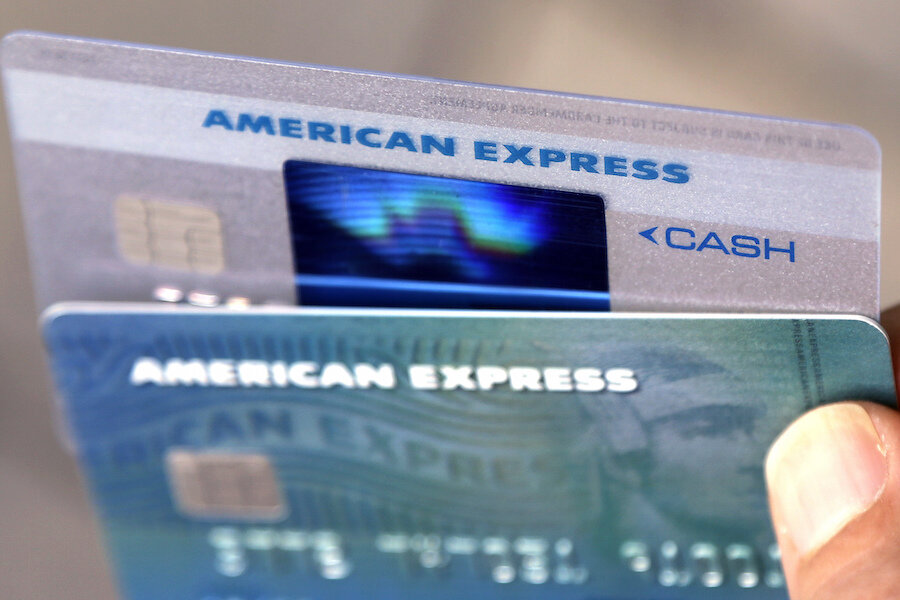Buy your kid a good credit score for $200
Loading...
When your adult child is getting ready to launch, a decent credit score can make life a lot easier: No credit history and no credit score can be a real obstacle to renting an apartment or getting a credit card.
But young adults exploring how to build credit at 18 may find themselves in a bind. They can’t get credit because they don’t have a credit history, and they don’t have a credit history because they can’t get credit.
What if you could fix the problem for $200 without risking your own credit?
The secured card strategy
Consider paying the deposit to help your adult child open a secured credit card and start building credit. A secured credit card requires a deposit upfront, and the credit limit is typically equal to the deposit. The deposit can be as low as $200, and the cardholder can establish a credit score in about six months.
If your son or daughter still lives at home, you have an opportunity to go over the bill together. Make sure he or she understands the interest rate, minimum payment and due date — and how long it would take to pay off the balance making only minimum payments.
Secured cards are for those 18 or older, but are likeliest to be approved for those 21 and older. If your adult child is under 21, he or she will either have to show an independent income or have a co-signer. (But be aware that co-signing puts your own credit at risk.)
You can help younger kids build credit by adding them as anauthorized user on your credit card. However, the parent is on the hook to pay any charges, and only a few cards offer spending limitson authorized users. Also, being an authorized user doesn’t have as much credit-building power.
If you’re trying to help a son or daughter who’s struggling with how to build credit at 18 or older, a secured card helps them more — and protects you more.
Parents have several reasons to front the money for a secured card:
- Your adult child will be less likely to ask you to co-sign for an apartment, car loan or traditional unsecured credit card if he or she can build up a good credit score.
- A separate card, not in your name, protects your credit standing. If your son or daughter turns out to be less responsible than you hoped, it won’t wreck your credit score.
- Once your child transitions to an unsecured credit, the secured card can be closed and your deposit returned.
Here’s what’s in it for the young adult:
- Being a primary user, not an authorized user, weighs more heavily in credit scoring because primary users are responsible for payment.
- Learning about how credit works, and the costs associated with it, is easier while still living at home.
- Having a separate bill, rather than charges going to a parent’s card, gives financial privacy.
- Building credit can lead to getting an unsecured card, or being approved for loans or to rent an apartment.
Potential drawbacks of the secured card strategy
Are there downsides? Of course. For starters, somebody has to pay the deposit. As tempting as it is, choosing a super-low deposit means you have to be careful about spending.
The deposit amount is usually the card’s credit limit. And card issuers don’t view “credit limit” in the same way that the highway patrol views “speed limit.” Driving the speed limit won’t get you in trouble, but going right up to your credit limit will lower your credit score.
That’s because credit utilization has a big effect on your credit score. Credit experts advise keeping spending to 30% or less of your credit limit. To stay at or below 30% utilization on a secured card with a $200 limit, you’d have to limit monthly spending to $60. That’s not a lot, so you may want to spring for a higher deposit. Failing that, your adult child can keep the balance low by making smaller, more frequent payments rather than one a month.
Also, secured cards tend to have high interest rates and annual fees. And only some cards offer a feature that lets a user “graduate” to an unsecured card, usually after a stretch of on-time payments.
A way station, not a destination
A secured card is meant to be temporary. If things go well, it’s a tool to help your adult child build a decent credit score and transition to an unsecured card.
And if things don’t go well? The only credit score that is damaged is your adult child’s and he or she is afforded what we’ll call a “learning opportunity.” Is that such a terrible thing?
Bev O’Shea is a staff writer at NerdWallet, a personal finance website. Email: boshea@nerdwallet.com. Twitter: @BeverlyOShea.
This article first appeared in NerdWallet.







